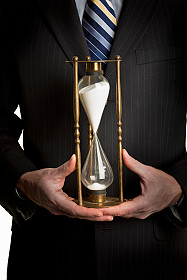Evolution of Clocks
When people start to list most important inventions ever created, the same answers are always given: electricity, the wheel, the telephone, the car and the internet. Obviously, all of these inventions have made impacts on our society greater than can be properly explained in one blog post. However, none of these objects could have invented without the same common ingredient: measured amounts of time. Whether it takes days, months or years to create any of these life improving instruments, time is a necessary tool in any production process.
With that being said, the clock should be doctored into the list of revolutionary inventions that immediately come to mind. One of the oldest generated products, the clock did not start out as a watch or a synchronized time system that we know it as today. The original clock was called a sundial, used in ancient times; a solid structure that was able to display the estimated time of day by the reflection of the sun’s rays. This lacked prowess though, as it would be useless in the evening with no sun.
Further advancements were made from this, including the water clock, spring driven clocks, pendulum clocks, equation clocks all leading into the electric clock. All these developments progressed into the state of the art technology Sapling now creates in the 21st century.
The Sapling wireless clock system is the finest advancement in the clock system industry to date. Within it, there are many parts that collectively operate which allow the each clock within the system to display the most accurate time possible, including a master clock and many secondary clocks, all working together to provide accurate time within any given facility.
What makes Sapling’s wireless clock system stand out among the competition is the fact that the clocks have the ability to act as a transceiver. This means that the clocks can receive and retransmit the time signal to neighboring clocks, maximizing the strength and distances the signal can be transmitted. Secondary clocks are acting as the aforementioned transceiver, receiving and sending the signal back out to each other, thus making the signal stronger.
Tracing the history back to your origins allows you to see how much advancement has been made in your field and can also excite you as to what’s to come in the future. More work will be put into Sapling wireless clock systems to make sure they are on the cutting edge of technology and constantly providing you the most in sync, accurate time!

